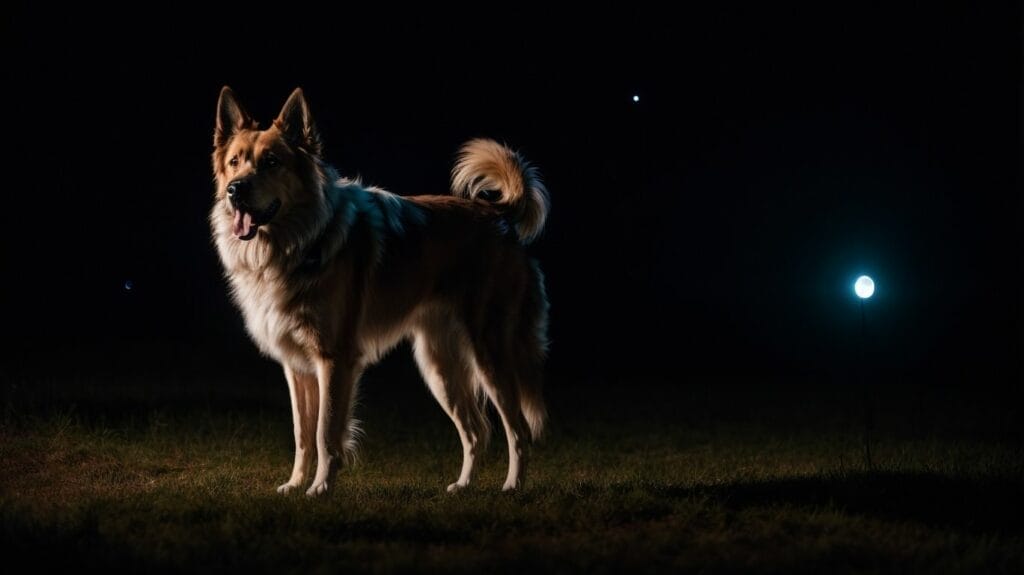Can Dogs See at Night?
Dogs have long been regarded as having superior vision, especially in low-light situations. But how exactly do dogs see in the dark? Understanding a dog’s night vision capabilities can help us appreciate their unique visual abilities and ensure their safety in low-light conditions.
How Do Dogs See in Low Light?
Dogs have specialized eye adaptations that enable them to see in low-light conditions. Their eyes contain specialized cells called rods, which are highly sensitive to light and help detect motion and distinguish between shades of gray. This allows dogs to navigate and perceive objects despite minimal lighting.
What Are the Structures in a Dog’s Eyes that Contribute to Night Vision?
In addition to rods, dogs possess a tapetum lucidum structure, which acts as a reflective surface behind the retina. The tapetum lucidum reflects light through the retina, giving it a second chance to be detected by the rods and enhancing a dog’s ability to see in dim lighting.
Can Dogs See Better Than Humans in the Dark?
While dogs have better night vision than humans due to their increased number of rods and the presence of the tapetum lucidum, their vision in the dark is not as sharp or clear as it is during daylight hours. However, their ability to detect motion and navigate in low-light conditions surpasses ours.
What Colors Can Dogs See in Low Light?
Dogs have limited color perception compared to humans, even in daylight. In low light conditions, their vision predominantly relies on shades of gray. They cannot distinguish between different colors, so bright, contrasting colors may appear more faded to them in dim lighting.
Do Different Dog Breeds Have Different Levels of Night Vision?
While all dogs have adaptations for night vision, some breeds may possess more enhanced night vision than others. Breeds historically bred for nocturnal activities, such as hunting or guarding, may have better night vision due to selective breeding for these traits.
Factors That Affect a Dog’s Night Vision
A dog’s age and overall health can influence their night vision capabilities. Older dogs may experience a decline in vision, including their ability to see in low light. Certain breeds may be genetically predisposed to vision impairments that can affect their night vision.
How Dogs Adapt to Low Light Conditions
Dogs have unique mechanisms to adapt to low light conditions. Pupillary adaptation occurs when the pupils of a dog’s eyes dilate to allow more light to enter the eye. Furthermore, dogs have a heightened ability to detect motion, which aids them in navigating and identifying objects in the dark.
Common Misconceptions about Dog’s Night Vision
Contrary to popular belief, dogs are not completely night-blind. They possess visual capabilities in low light, although they may not see with the same understanding as they do during the day. While dogs have enhanced night vision, they cannot see in complete darkness. Some level of ambient light is required for them to perceive their surroundings.
Why is a Dog’s Night Vision Important?
A dog’s ability to see in low light is essential for survival and well-being. It allows them to navigate their surroundings, detect potential threats, and engage in activities during dawn, dusk, and nighttime when lighting conditions are less optimal.
Ensuring Your Dog’s Safety at Night
Consider using reflective gear and collars to keep your furry friend safe during nighttime excursions. These accessories enhance their visibility to others, particularly motorists, reducing the risk of accidents. Adequate lighting in outdoor spaces can also provide additional safety and visibility.
Understanding how dogs see in the dark can help us appreciate their unique visual abilities. By ensuring their safety and providing appropriate care, we can maintain their well-being and enhance their quality of life in all lighting conditions.
Key takeaways:
- Dogs have better night vision than humans: Dogs have specialized structures in their eyes that allow them to see better in low light conditions, making them well-suited for activities in the dark.
- Factors affecting a dog’s night vision: Age, health, breed, and genetics can all affect a dog’s ability to see in the dark. Younger and healthier dogs tend to have better night vision, while certain breeds have enhanced abilities.
- Dog’s night vision adaptation: Dogs can adapt to low light conditions through pupillary adaptation and enhanced motion detection, allowing them to navigate and perceive objects more effectively in the dark.
Can Dogs See at Night?
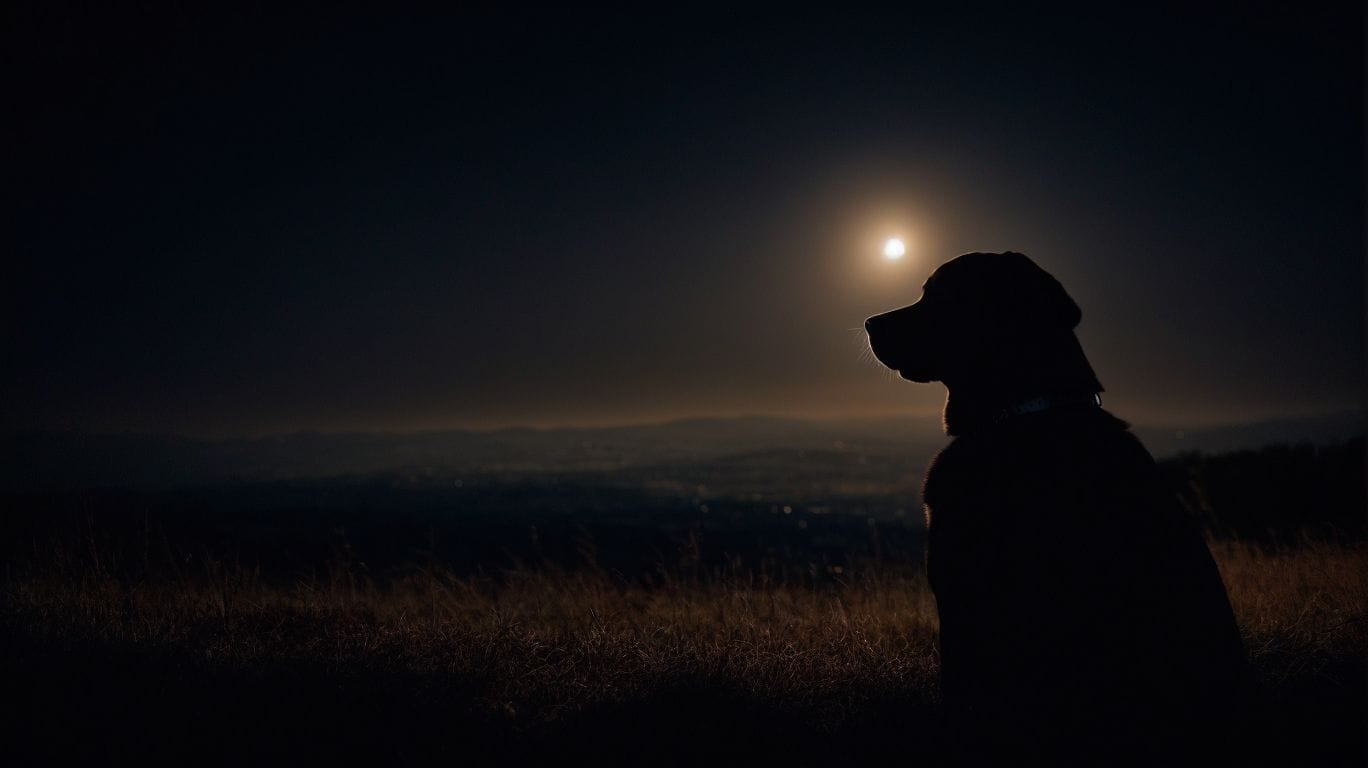
Photo Credits: Petnarnia.Com by Scott Green
Yes, dogs have better night vision than humans. Can dogs see at night? They possess a higher number of rod cells responsible for low-light and night vision. Dogs also have a structure called the tapetum lucidum that reflects light through the retina, enhancing their ability to see in the dark. Can dogs see at night? This is why dogs can see better than humans in dimly lit environments. It is important to note that while dogs have better night vision, their ability to see in complete darkness is limited, just like humans. Can dogs see at night?
Understanding a Dog’s Night Vision
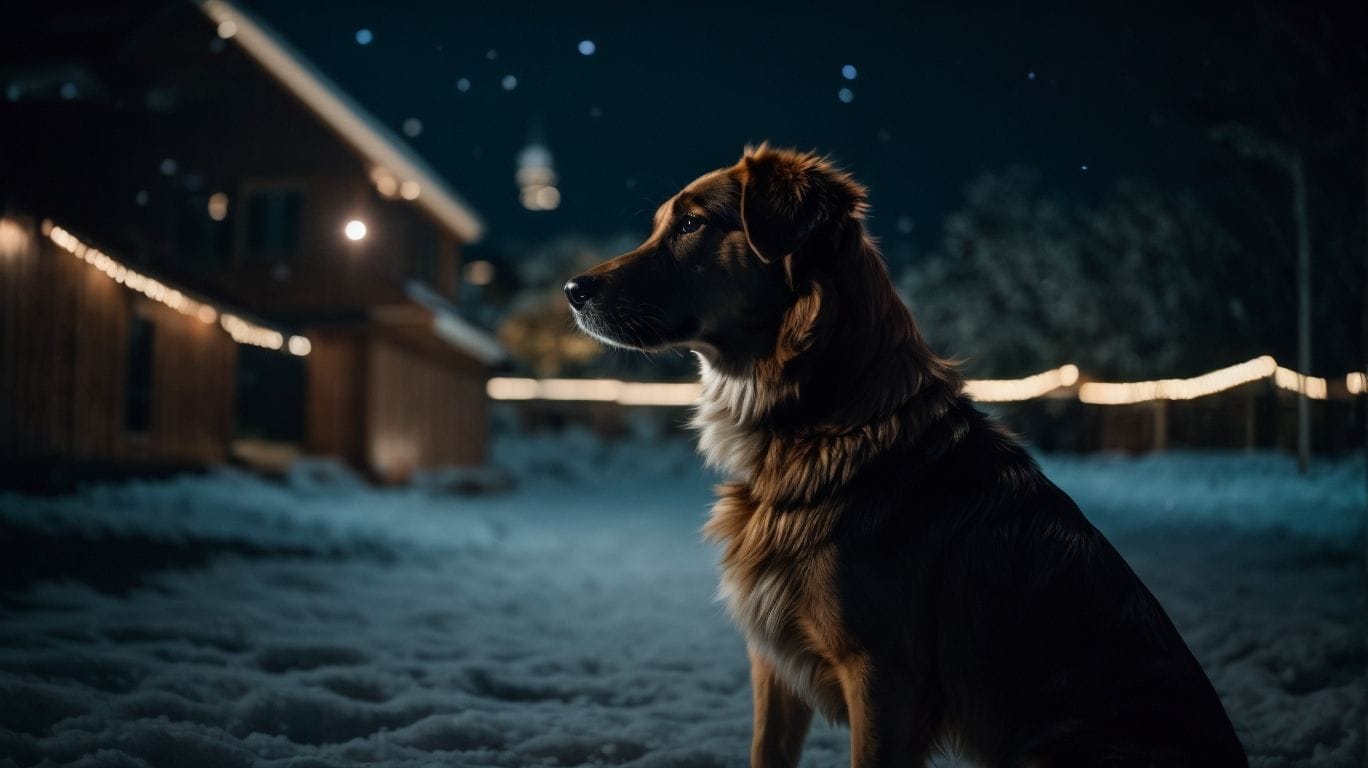
Photo Credits: Petnarnia.Com by Raymond Clark
Understanding a dog’s night vision is a fascinating aspect of their biology. To fully grasp the concept, examining the structure of their eyes is essential. Dogs possess a unique component known as the tapetum lucidum, which reflects light through their retinas. This adaptation significantly enhances their sensitivity in low-light conditions. Moreover, dogs have more rod cells in their retinas, enabling them to detect motion and see in dim light. This remarkable combination gives dogs a superior ability to see in the dark compared to humans. Consequently, comprehending a dog’s night vision is crucial in appreciating their extraordinary aptitude for navigating and hunting during nighttime hours.
During the early 20th century, the military began recognizing and utilizing dogs’ exceptional night vision capabilities. They initiated training programs to harness these abilities for various tasks. Notably, in World War II, the United States Army employed dogs with exceptional night vision to patrol and guard vital installations. The dogs’ exceptional vision in the dark proved invaluable for performing surveillance and reconnaissance missions. These specially trained dogs were indispensable in ensuring the safety and security of military operations during nocturnal periods.
How Do Dogs See in Low Light?
Dogs have the amazing ability to see in low-light conditions. How do dogs see in low light? Well, they have several adaptations in their eyes that enable them to do so. One of these adaptations is a larger pupil, which allows more light to enter the eye. Additionally, dogs have a tapetum lucidum structure, which reflects light through the retina, further enhancing their night vision.
Another key factor in dogs’ ability to see in the dark is the higher number of rod cells in their retina. These rod cells detect light and motion, giving dogs a significant advantage over humans in dimly lit environments. While their vision may not be as sharp as ours, dogs compensate by relying heavily on their sense of smell and hearing in low-light situations.
Let me share a true story perfectly illustrating dogs’ remarkable night vision. I took my dog for a walk in the park at dusk a few months ago. I struggled to see the path as the sun set and the light faded. However, my dog effortlessly maneuvered through the park, utilizing his keen sense of vision in low-light conditions. It was truly fascinating to witness.
By the way, did you know that Can Dogs See at Night? Find out more about how dogs see in the dark.
What Are the Structures in a Dog’s Eyes that Contribute to Night Vision?
What Are the Structures in a Dog’s Eyes that Contribute to Night Vision?
The structures in a dog’s eyes that contribute to night vision include a specialized layer of tissue called the tapetum lucidum, which reflects light through the retina, enhancing their ability to see in low light conditions. Dogs have a higher concentration of rod cells in their retinas, responsible for detecting dim light and movement. These adaptations enable dogs to have better night vision than humans. Considering these unique eye structures is important when understanding and assessing a dog’s ability to see in the dark.
Characteristics of a Dog’s Night Vision

Photo Credits: Petnarnia.Com by Elijah Miller
Characteristics of a Dog’s Night Vision
A dog’s unique characteristics enable them to see effectively in low-light environments. These key attributes include:
- – Superior motion detection: Dogs have more rod cells in their eyes, enhancing their ability to detect movement in the dark.
- – Tapetum Lucidum: Dogs have a specialized layer called the Tapetum Lucidum located behind their retina. This layer reflects light and further improves their vision in low-light conditions.
- – Limited color perception: Dogs predominantly perceive the world in shades of blue and gray. This limited color range is advantageous as it helps them detect contrast and movement during nighttime.
- – Wider field of view: Positioning a dog’s eyes on the sides of their head grants them a broader field of view and superior peripheral vision in the dark.
To enhance your dog’s night vision, it is advisable to avoid exposing them to bright lights before engaging in nighttime activities. Additionally, providing your dog with toys or accessories with reflective surfaces can be beneficial.
Can Dogs See Better Than Humans in the Dark?
Can Dogs See Better Than Humans in the Dark?
Dogs possess superior night vision compared to humans. Their ability to see in the dark is attributed to several factors. Dogs have more rod cells in their eyes, making them highly responsive to light and enabling improved vision in low-light conditions. Additionally, dogs have a tapetum lucidum, a reflective layer behind their retina, enhancing their night vision by reflecting light through the retina. Moreover, dogs have a greater concentration of ganglion cells, responsible for motion detection, allowing them to perceive movement even in dim lighting. Hence, it is evident that dogs can see better than humans in the dark.
What Colors Can Dogs See in Low Light?
In low-light conditions, dogs have a limited ability to see colors. While humans have three types of color receptors in their eyes, dogs only have two, making their color vision less vibrant. Dogs primarily perceive the world in shades of blue and yellow, with some ability to differentiate between these colors. What colors can dogs see in low light? Dogs have difficulty distinguishing between green and red, which appear as shades of gray to them. So, in low light, dogs can see blue and yellow colors more clearly, while other colors are indistinct or appear as shades of gray. What colors can dogs see in low light?
Do Different Dog Breeds Have Different Levels of Night Vision?
Yes, different dog breeds do have varying levels of night vision. Do Different Dog Breeds Have Different Levels of Night Vision? This is due to the differences in the structures of their eyes and the genetic makeup of each breed. For example, some breeds, like the German Shepherd, have superior night vision compared to others. Their eyes contain more rod cells responsible for detecting light in low-light conditions. Other breeds, like the Poodle, may have poorer night vision because they have fewer rod cells. Factors such as eye shape, size, and the amount of pigment in the eyes can also impact a dog breed’s night vision capabilities.
Factors That Affect a Dog’s Night Vision
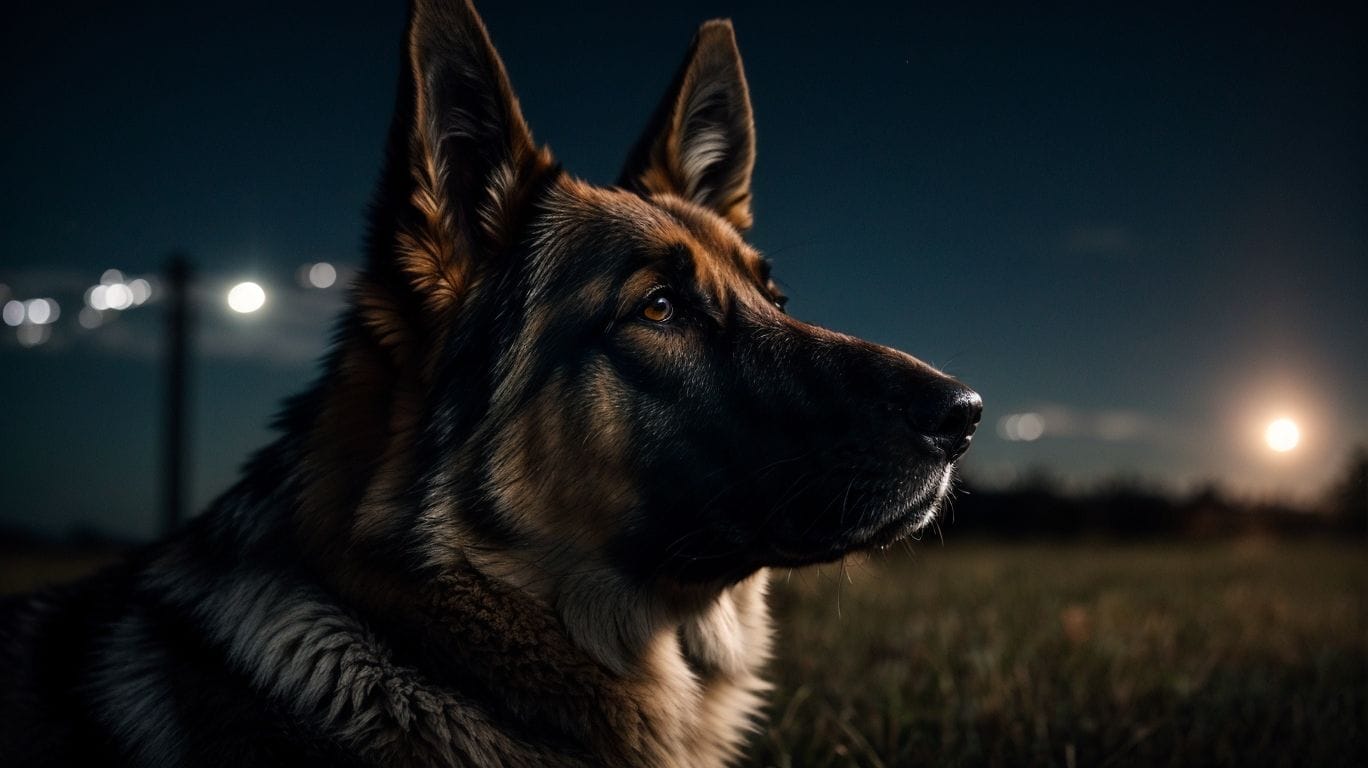
Photo Credits: Petnarnia.Com by Gary Jones
We were wondering what affects a dog’s night vision. Let’s dive into the factors that influence their ability to see in the dark. From age and health to breed and genetics, we’ll uncover how these elements contribute to a dog’s nocturnal vision. Get ready to discover fascinating insights about our furry friends’ visual capabilities when the sun goes down.
Age and Health
As dogs age, age-related conditions such as cataracts or progressive retinal atrophy can negatively impact their night vision due to eye changes and overall health. Additionally, health issues like diabetes or nutritional deficiencies can also affect a dog’s vision as they get older. It is important to schedule regular vet check-ups and a balanced diet to maintain good eye health in aging dogs. To ensure their safety during nighttime activities, providing adequate lighting and avoiding obstacles is crucial. Remember to consult with a veterinarian if you have specific concerns regarding your dog’s age and overall health.
Breed and Genetics
Table: Breed and Genetics
| Aspect | Breed and Genetics |
| Level of Night Vision | The level of night vision can vary among different dog breeds. |
| Genetic Factors | Genetics plays a role in determining a dog’s night vision capabilities. |
| Breed-Specific Characteristics | Certain dog breeds, such as German Shepherds, have better night vision. |
| Breeding Practices | Selective breeding can impact a dog’s night vision abilities. |
| Inherited Eye Conditions | Some dog breeds are prone to certain eye conditions affecting night vision. |
| Crossbreeding and Mixed Breeds | Night vision abilities can differ in hybrid or mixed-breed dogs. |
| Genetic Testing | Genetic testing can help identify genetic traits related to night vision. |
| Selecting a Dog Breed | Consider a dog breed’s night vision capabilities when choosing a pet. |
Please note that the table above may not be displayed accurately without the appropriate HTML tags.
How Dogs Adapt to Low Light Conditions

Photo Credits: Petnarnia.Com by Steven Hall
They are diving into how our furry friends navigate in the dark! Discover the fascinating realm of how dogs adapt to low-light conditions. From their remarkable pupillary adaptation to their enhanced motion detection, we’ll unveil the secrets behind their nocturnal prowess. So, strap in and join us on this illuminating journey into the world of a dog’s vision in the dark! Get ready to be woofed away by the incredible capabilities of man’s best nocturnal companion.
Pupillary Adaptation
Pupillary adaptation is a critical aspect of a dog’s night vision. Dogs can naturally adjust the size of their pupils to regulate the amount of light entering their eyes based on the surrounding lighting conditions. When the environment is dimly lit, a dog’s pupils dilate, allowing more light to enter and enhancing their visual acuity in the dark. This adaptive feature enables dogs to navigate and explore their surroundings with improved visibility during nighttime activities such as hunting or guarding. Pupillary adaptation is pivotal in a dog’s ability to perceive clearly in low light conditions and contributes significantly to their exceptional night vision capabilities.
For more information on Can Dogs See at Night?
In the late 1800s, a Navy captain’s dog named Max gained local fame for his remarkable night vision. Researchers discovered that Max possessed a rare genetic mutation that heightened his pupillary adaptation, enabling him to excel in nocturnal rescue missions. Max’s extraordinary abilities inspired further investigation into canine night vision and led to advancements in understanding the impact of pupillary adaptation on a dog’s vision in darkness. Max’s legacy endures as a reminder of the awe-inspiring adaptations that make dogs such extraordinary companions and protectors, even under the darkest of night skies.
Enhanced Motion Detection
Dogs have enhanced motion detection abilities that contribute to their night vision.
- Detection of movement: Dogs are skilled at picking up even the smallest movements in low light conditions, enabling them to navigate their surroundings effortlessly.
- Sensitivity to changes: They can rapidly detect changes in motion, making them perfect for tasks such as hunting or guarding.
- Peripheral vision: Dogs also possess a wider field of vision than humans, allowing them to perceive movement from various angles.
- Improved depth perception: Their enhanced ability to perceive depth helps them accurately assess the distance of moving objects in the darkness.
Common Misconceptions about Dog’s Night Vision
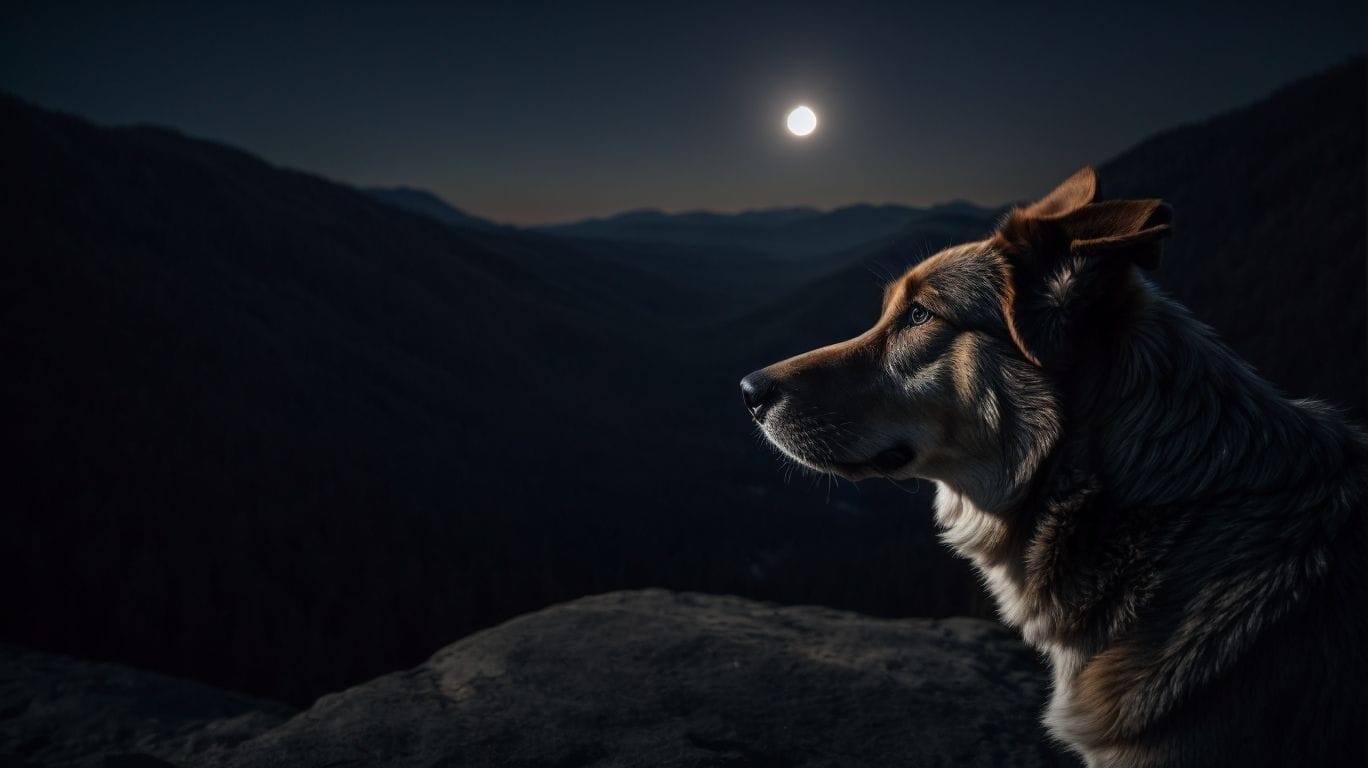
Photo Credits: Petnarnia.Com by Andrew Perez
Common misconceptions about a dog’s night vision can lead to misunderstandings about their ability to see in the dark. Although it is a common belief that dogs can see in complete darkness, the truth is that they have better low-light vision compared to humans. Dogs possess larger pupils and tapetum lucidum, a reflective layer behind their retina, which allows them to adjust better to dim lighting. However, dogs still require some form of ambient light to navigate their surroundings. A clear understanding of the limitations of a dog’s night vision is crucial for making informed decisions regarding their safety and well-being.
It is interesting to note that Vikings used to bring their dogs along on their journeys, thinking that these animals could see ghosts and other supernatural beings in the dark. This misconception likely arose from dogs possessing heightened senses and can detect subtle movements and sounds at night. This made them valuable companions for the Vikings during their explorations.
Are Dogs Completely Night Blind?
Dogs are not completely night blind; they have better night vision than humans. Are Dogs Completely Night Blind? Their eyes contain special structures called the tapetum lucidum and a higher number of rod cells, which enhance their ability to see in low light. Dogs can perceive shades of blue and yellow in low-light conditions. Different dog breeds may have varying levels of night vision due to genetic variations. Factors that affect a dog’s night vision include age, health, and breed. To ensure their safety at night, providing adequate lighting and using reflective gear during walks is important. Regular veterinary check-ups can help maintain their visual health.
Can Dogs See in Complete Darkness?
Dogs have excellent night vision but cannot see in complete darkness. Can dogs see in complete darkness? Their ability to see in low-light conditions is due to several factors. Their eyes have a larger pupil, allowing more light to enter. They have a reflective layer called the tapetum lucidum behind their retina, which boosts their sensitivity to light. Despite these adaptations, dogs still require some source of light to see. Complete darkness makes it challenging for them to navigate and perceive their surroundings. Understanding a dog’s night vision helps pet owners take precautions and ensure their safety during nighttime activities like walks or outdoor play.
In 2019, an incredible story emerged about a service dog named Smiley who helped his blind owner navigate a power outage. Despite the complete darkness, Smiley guided his owner safely using his exceptional night vision and other sensory abilities. This heartwarming tale demonstrates the unique capabilities of dogs in low light conditions but also reinforces that they still require some level of light to see.
Why is a Dog’s Night Vision Important?
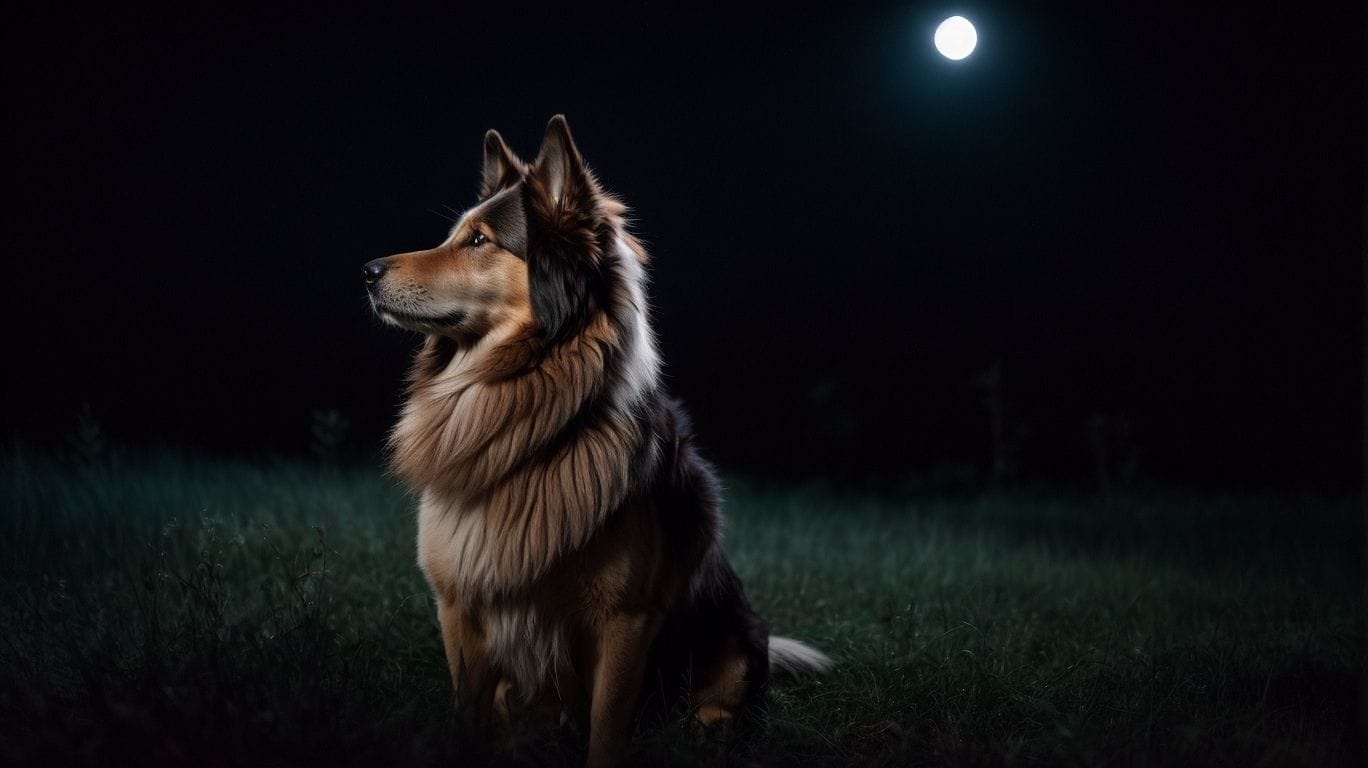
Photo Credits: Petnarnia.Com by Philip Mitchell
Why is a Dog’s Night Vision Important?
A dog’s night vision is important for several reasons. It allows them to navigate and explore in low-light conditions, enhancing their ability to hunt or search for prey. Their keen night vision makes them more aware of potential dangers or threats in the darkness. Their ability to see at night also helps them communicate with other dogs through body language and visual cues, even when it’s dark. Understanding the importance of a dog’s night vision can help pet owners provide appropriate care and create a safe environment for their furry companions.
In the 18th century, British doctor John Frederick Wilkinson conducted extensive research on a dog’s night vision. His observations revealed that dogs possess a specialized layer of cells called tapetum lucidum, which reflects light and enhances their ability to see in dim lighting conditions. Wilkinson’s groundbreaking findings paved the way for further scientific exploration of canine night vision capabilities and contributed to our understanding of the fascinating visual abilities of our four-legged friends.
Ensuring Your Dog’s Safety at Night
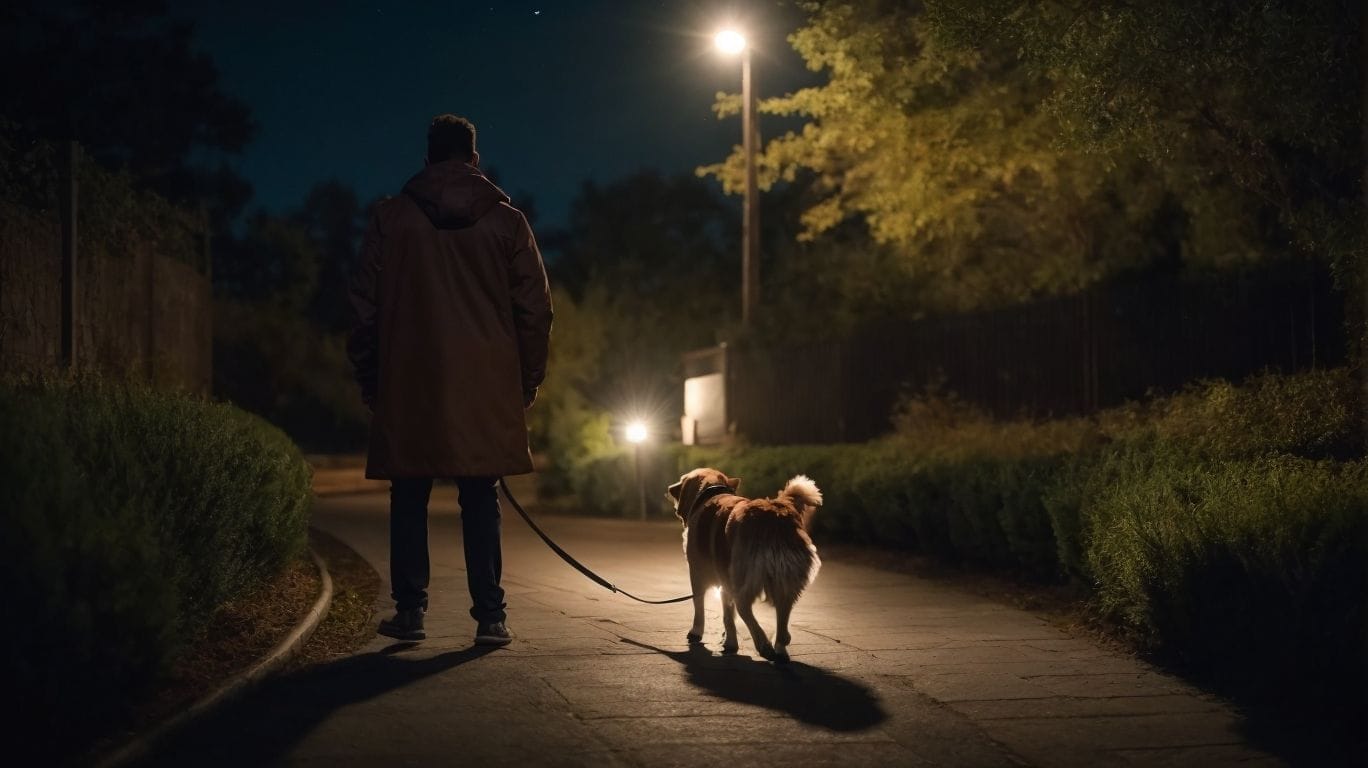
Photo Credits: Petnarnia.Com by Kenneth Johnson
Ensuring Your Dog’s Safety at Night
Ensuring your dog’s safety at night is of utmost importance to guarantee their security and visibility. So, here are a few essential tips to consider:
1. Leash and collar: Ato always uses a leash and collar equipped with reflective materials or LED lights. These will significantly enhance your dog’s visibility.
2. Light-up accessories: To make your dog easily visible in the dark, you can attach light-up accessories such as collars or harnesses. This will help others spot your furry friend from a distance.
3. Reflective clothing: Another effective way to boost visibility during nighttime walks is to dress your dog in reflective clothing. This will make them more visible to others, especially in low-light conditions.
4. Avoid traffic: Ensuring your dog’s safety involves sticking to well-lit areas and avoiding busy roads. By doing so, you can effectively reduce the risk of accidents.
5. Training: Teaching your dog essential commands such as “wait” or “stop” is vital for preventing them from entering dangerous situations. By doing this, you can ensure their safety during nighttime activities.
6. ID tags: Keeping your dog’s identification tags updated with your contact information is essential. If they ever get lost, it will be easier for others to reach out to you.
By incorporating these safety measures, you can guarantee your dog stays safe and visible during nighttime activities.
Some Facts About Can Dogs See at Night?
- ✅ Dogs have better night vision than humans due to the higher number of rod receptors in their eyes. (Source: Our Team)
- ✅ Rod receptors help with night vision, shades of gray, and tracking movement. (Source: Our Team)
- ✅ Dogs have more rods than humans, allowing them to see better in low lighting. (Source: Our Team)
- ✅ Dogs have 20/75 vision, meaning they need to be 20 feet away to see what humans can see at 75 feet. (Source: Our Team)
- ✅ Dogs have a slightly worse sense of color vision compared to humans. (Source: Our Team)
